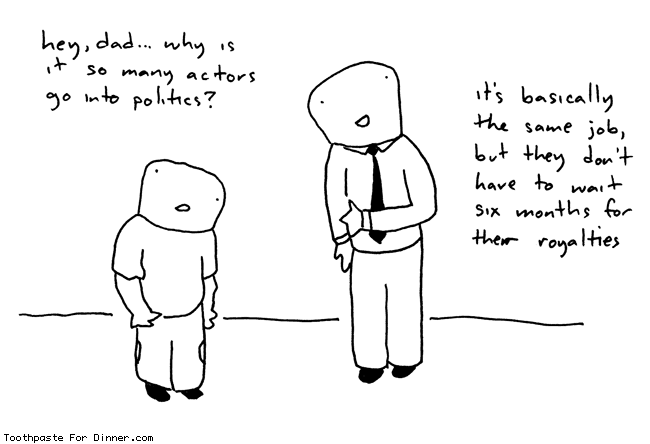The voice of an artist as a political voice is usually the most controversial because it usually involves conveying an opinion that not everyone agrees on. A person can say various things about one’s society or government that may not be commonly expressed. As a result, some people may protest that person’s work, reject it completely, or they might actually agree and accept it.
Political issues have always been present in our society. In fact, they are a large part of our lives and affect us on a day-to-day basis. On the surface, we usually see and accept what the media shows us on television. We are influenced by what it shown and react to what we think is going on. The media does a good job in twisting around words and actions so the viewers can act or feel accordingly to what they want. Many times, we do not look into the reality of certain issues and just accept what is going on, the way it is going on. However, sometimes there are those few people that think out of the box and research what is actually happening around them. Sometimes the findings aren’t so pleasant and are hard to accept at first. Eventually though, those people want the world to know about what they discovered so they share it knowing the consequences of their actions. Some of these people are known as artists.
Many times, artists have used their work to illustrate another aspect of society not shown before. They think in a unique manner that allows this to be possible. They can criticize the government (for example) in a deceptive manner or just outspokenly say what they have to. For instance, in Fahrenheit 9/11, Moore is criticizing the government over what happened because of the World Trade Center bombings. Various countries invaded, innocent people killed, the number of lives destroyed, still counting… In the media, we were showed that the actual invasion was a search for weapons of mass destruction. Well, the weapons were never found, and furthermore, why were so many people killed in the process? Lets not even look at the number of people killed. Why did the government have to go into Iraq in the first place? They were not associated with the 9/11 bombings. These are just a few ways that how revealing the true agenda of the government can be so controversial. We start re evaluating the values of our society and this creates a problem. We are not in out safe little bubble anymore. We might be sitting home on our couches comfortably, but now we start thinking about those who are getting attacked, tortured, and murdered everyday. Was it the children in Afghanistan that were at fault for the 9/11 bombings? So why is it then that their country is in a state of turmoil and they live in a state of fear. I personally do not think it is even close to moral to have innocent people dying for really, no reason.
The artist’s political role in society is a very contentious one. By expressing the uncommon view of our world, the artist is creating a difficult situation for her/himself. The view may not be readily accepted and they can get highly criticized for it. Additionally, if the artist leaks information that is completely confidential, they might even be censored or exiled. How would the average person know what is really going on? Even though the voice of an artist as a political one is probably the most controversial one, I think it is the most important one as well. We discover the true values of our society and discover things that we may not have previously thought or even imagined.













